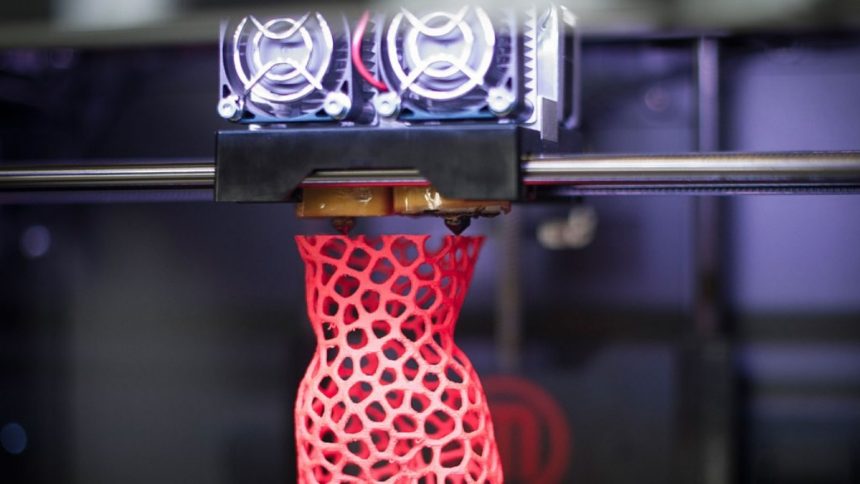There’s no question that in recent years, 3D printing has transcended its roots in industrial design and rapid prototyping to become a powerful tool for DIY enthusiasts and home improvement aficionados. This innovative technology offers endless possibilities, enabling homeowners to create custom, durable, and cost-effective solutions for various home improvement projects. From functional hardware to personalised décor, 3D printing can transform your living space in ways you never imagined.
In this blog post, we’ll explore some practical 3D printing projects for home use, selecting durable filaments for home improvement tasks, and tips for creating custom home décor items.
Practical 3D Printing Projects for Home Use
The versatility of 3D printing makes it perfect for a wide range of home improvement projects. Here are some practical ideas to get you started:
- Custom Drawer Organisers: Say goodbye to cluttered drawers with custom-made organisers. Design compartments to fit your specific needs, whether it’s for utensils, tools, or office supplies. The precision of 3D printing ensures a perfect fit every time.
- Replacement Parts: It’s common to have appliances or furniture with small broken parts that are hard to replace. With 3D printing, you can create exact replicas of these parts, extending the life of your household items and saving money on replacements.
- Cable Management Solutions: Tired of tangled cords and cables? Print custom cable clips, holders, and organisers to keep your workspace or entertainment centre neat and tidy.
- Wall Hooks and Brackets: Create sturdy, custom hooks and brackets for your home. Whether you need a unique shape or a specific size, 3D printing allows you to design fixtures that perfectly meet your requirements.
- Gardening Tools and Accessories: From plant markers to custom-designed pots and planters, 3D printing offers numerous possibilities for garden enthusiasts. Durable, weather-resistant materials ensure your creations withstand outdoor conditions.
Selecting Durable Filaments for Home Improvement Tasks
Choosing the right filament is crucial for the success of your 3D printing projects, especially for home improvement tasks that require durability and strength. Here are some popular filament options:
- PLA (Polylactic Acid): PLA is one of the most commonly used filaments due to its ease of use and environmental friendliness. While it’s great for decorative items, it may not be suitable for parts that require high strength or heat resistance.
- ABS (Acrylonitrile Butadiene Styrene): ABS is known for its toughness and impact resistance, making it ideal for functional parts. However, it requires a heated bed and proper ventilation during printing due to the fumes it emits.
- PETG (Polyethylene Terephthalate Glycol): PETG combines the best of PLA and ABS, offering both strength and ease of use. It’s resistant to impact and can handle higher temperatures, making it suitable for both indoor and outdoor applications.
- Nylon: Nylon is highly durable and flexible, perfect for parts that need to withstand wear and tear. However, it can be tricky to print due to its tendency to absorb moisture from the air.
- TPU Filament: TPU filament is a flexible, rubber-like material that’s excellent for creating items that require elasticity and impact resistance. It’s perfect for phone cases, cable protectors, and other items that benefit from flexibility and durability.
Tips for Creating Custom Home Décor Items
3D printing is not just about functionality; it’s also a fantastic way to add a personal touch to your home décor. Here are some tips for creating stunning custom décor items:
- Start with a Clear Design Concept: Before you begin printing, have a clear idea of what you want to create. Sketch your design or use 3D modelling software to visualise the final product – this step ensures that your project turns out exactly as you envision.
- Use High-Quality Models: Whether you design your own models or download them from online repositories, ensure they are high quality. Poorly designed models can result in printing errors and wasted material.
- Experiment with Colours and Finishes: Don’t be afraid to experiment with different colours and finishes. Many filaments come in a variety of colours and textures, allowing you to match your décor perfectly. You can also paint or sand your prints to achieve the desired look.
- Incorporate Mixed Materials: Combine 3D printed items with other materials for a unique effect. For example, you can create a 3D printed lamp base and pair it with a fabric lampshade, or print a frame and add a mirror or glass insert.
- Functional Décor: Why note create décor items that also serve a purpose? You could print custom light switch covers, unique shelving brackets, or stylish planters. These items not only beautify your space but also add functionality.
- Scale and Proportion: Pay attention to the scale and proportion of your prints in relation to your existing décor, as an oversized print can dominate a space, while a small, intricate design can add subtle charm.
Ready to get started?
3D printing has revolutionised the way we approach DIY home improvement projects, offering unparalleled customisation and creativity. By selecting the right filaments and following best practices for design and printing, you can create practical, durable, and beautiful items for your home. Whether you’re a seasoned maker or a DIY novice, 3D printing opens up a world of possibilities to enhance your living space and bring your creative visions to life. Happy printing!
Lynn Martelli is an editor at Readability. She received her MFA in Creative Writing from Antioch University and has worked as an editor for over 10 years. Lynn has edited a wide variety of books, including fiction, non-fiction, memoirs, and more. In her free time, Lynn enjoys reading, writing, and spending time with her family and friends.















